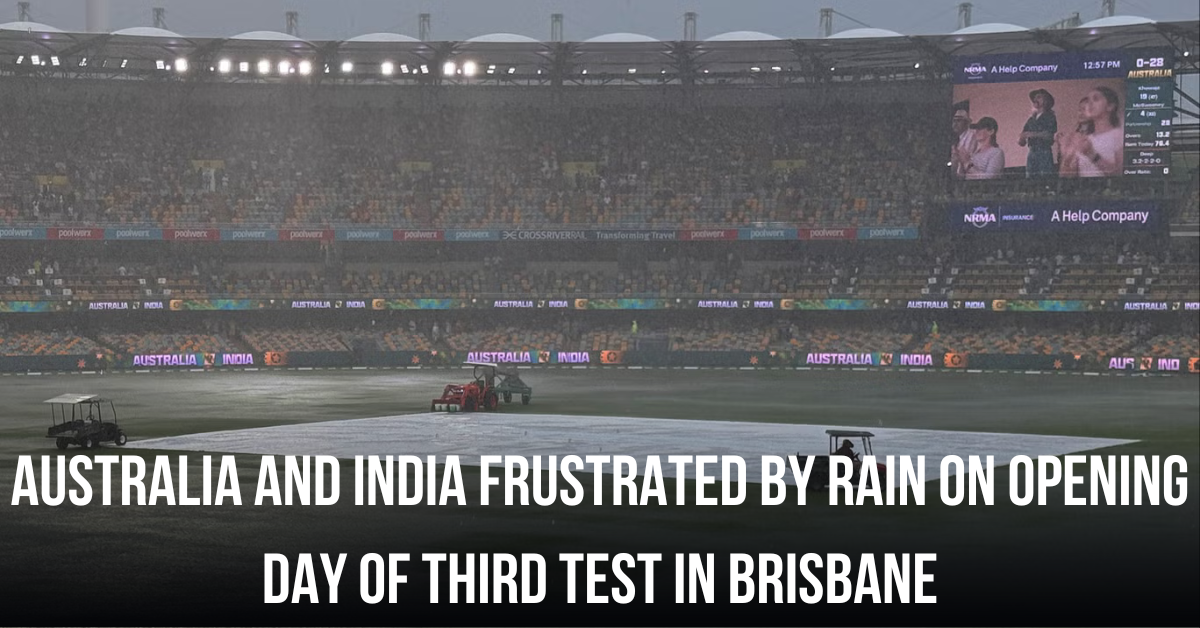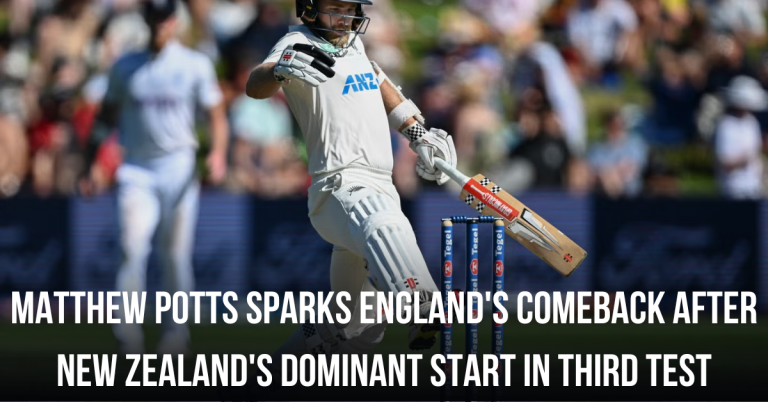Australia and India Left Waiting as Weather Washes Out Brisbane Test Opener

The much-anticipated third Test between Australia and India at Brisbane’s Gabba stadium faced a significant setback as persistent rain allowed only 13.2 overs of play on the opening day. This unexpected weather interruption left both teams and their supporters in a state of frustration and uncertainty.
Weather Disruptions at the Gabba
The day began under overcast skies, with Indian captain Rohit Sharma winning the toss and opting to field, hoping to exploit the favorable bowling conditions. However, the weather had other plans. Play commenced but was soon halted after just 5.3 overs due to a heavy downpour. Despite efforts to resume, only an additional 7.5 overs were possible before the rain returned, leading to an early end to the day’s play. :contentReference[oaicite:0]{index=0}
Impact on Players and Strategy
Such interruptions can significantly disrupt a team’s rhythm and strategy. Australia’s openers, Usman Khawaja and Nathan McSweeney, managed to put up 28 runs without losing a wicket during the brief periods of play. For India, the stop-start nature of the game made it challenging for bowlers like Jasprit Bumrah and Mohammed Siraj to find their groove and build pressure on the batsmen. :contentReference[oaicite:1]{index=1}
Financial Implications for Cricket Australia
Beyond the on-field challenges, the rain-induced disruptions had financial repercussions. Cricket Australia faced potential losses exceeding $1 million due to ticket refunds. According to the refund policy, a minimum of 15 overs must be bowled to avoid full refunds. Falling short by just 10 balls meant that the 30,145 fans in attendance were eligible for refunds, adding a financial strain to the organizational body. :contentReference[oaicite:2]{index=2}
Historical Context: Rain and Cricket at the Gabba
The Gabba has a storied history of weather interruptions affecting play. Brisbane’s subtropical climate often brings unexpected showers, especially during the summer months. Such disruptions have, in the past, influenced match outcomes and team strategies, making weather forecasts a crucial aspect of match preparations.
Fan Experience Amidst Weather Interruptions
For the thousands of fans who had eagerly awaited this marquee clash, the rain was a significant letdown. Many had traveled long distances, braving the elements, only to witness minimal play. The atmosphere, which began with high energy and anticipation, gradually shifted to disappointment as the weather refused to relent.
Looking Ahead: Weather Forecasts for the Remaining Days
As the Test progresses, both teams and fans are keeping a close eye on weather forecasts. While the second day proceeded without interruption, predictions indicate potential rain on subsequent days, which could further influence the match’s dynamics and outcomes. :contentReference[oaicite:3]{index=3}
Informational Guide: Understanding Cricket Match Interruptions Due to Rain
| Aspect | Details |
|---|---|
| Minimum Overs for Result | A minimum of 15 overs must be bowled in a day to avoid ticket refunds. |
| Duckworth-Lewis Method | A mathematical formula used to calculate target scores in limited-overs matches interrupted by weather. |
| Super Sopper | A ground equipment used to remove water from the pitch and outfield to resume play quickly after rain. |
| Reserve Days | Additional days allocated in some tournaments to make up for lost play due to weather interruptions. |
| Impact on Player Performance | Frequent stoppages can disrupt player concentration and momentum, affecting performance. |
Conclusion
The opening day’s rain interruption at the Gabba serves as a reminder of the unpredictable nature of cricket, where external factors like weather can play a pivotal role. As the Test unfolds, both teams will need to adapt their strategies, keeping in mind the potential for further disruptions, while fans hope for clearer skies and uninterrupted play.



